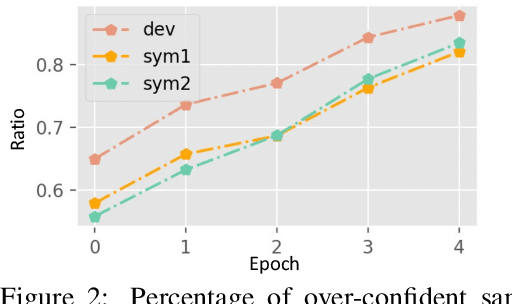Zirui He
SAE-SSV: Supervised Steering in Sparse Representation Spaces for Reliable Control of Language Models
May 22, 2025Abstract:Large language models (LLMs) have demonstrated impressive capabilities in natural language understanding and generation, but controlling their behavior reliably remains challenging, especially in open-ended generation settings. This paper introduces a novel supervised steering approach that operates in sparse, interpretable representation spaces. We employ sparse autoencoders (SAEs)to obtain sparse latent representations that aim to disentangle semantic attributes from model activations. Then we train linear classifiers to identify a small subspace of task-relevant dimensions in latent representations. Finally, we learn supervised steering vectors constrained to this subspace, optimized to align with target behaviors. Experiments across sentiment, truthfulness, and politics polarity steering tasks with multiple LLMs demonstrate that our supervised steering vectors achieve higher success rates with minimal degradation in generation quality compared to existing methods. Further analysis reveals that a notably small subspace is sufficient for effective steering, enabling more targeted and interpretable interventions.
SAIF: A Sparse Autoencoder Framework for Interpreting and Steering Instruction Following of Language Models
Feb 17, 2025Abstract:The ability of large language models (LLMs) to follow instructions is crucial for their practical applications, yet the underlying mechanisms remain poorly understood. This paper presents a novel framework that leverages sparse autoencoders (SAE) to interpret how instruction following works in these models. We demonstrate how the features we identify can effectively steer model outputs to align with given instructions. Through analysis of SAE latent activations, we identify specific latents responsible for instruction following behavior. Our findings reveal that instruction following capabilities are encoded by a distinct set of instruction-relevant SAE latents. These latents both show semantic proximity to relevant instructions and demonstrate causal effects on model behavior. Our research highlights several crucial factors for achieving effective steering performance: precise feature identification, the role of final layer, and optimal instruction positioning. Additionally, we demonstrate that our methodology scales effectively across SAEs and LLMs of varying sizes.
Mitigating Shortcuts in Language Models with Soft Label Encoding
Sep 17, 2023



Abstract:Recent research has shown that large language models rely on spurious correlations in the data for natural language understanding (NLU) tasks. In this work, we aim to answer the following research question: Can we reduce spurious correlations by modifying the ground truth labels of the training data? Specifically, we propose a simple yet effective debiasing framework, named Soft Label Encoding (SoftLE). We first train a teacher model with hard labels to determine each sample's degree of relying on shortcuts. We then add one dummy class to encode the shortcut degree, which is used to smooth other dimensions in the ground truth label to generate soft labels. This new ground truth label is used to train a more robust student model. Extensive experiments on two NLU benchmark tasks demonstrate that SoftLE significantly improves out-of-distribution generalization while maintaining satisfactory in-distribution accuracy.
 Add to Chrome
Add to Chrome Add to Firefox
Add to Firefox Add to Edge
Add to Edge